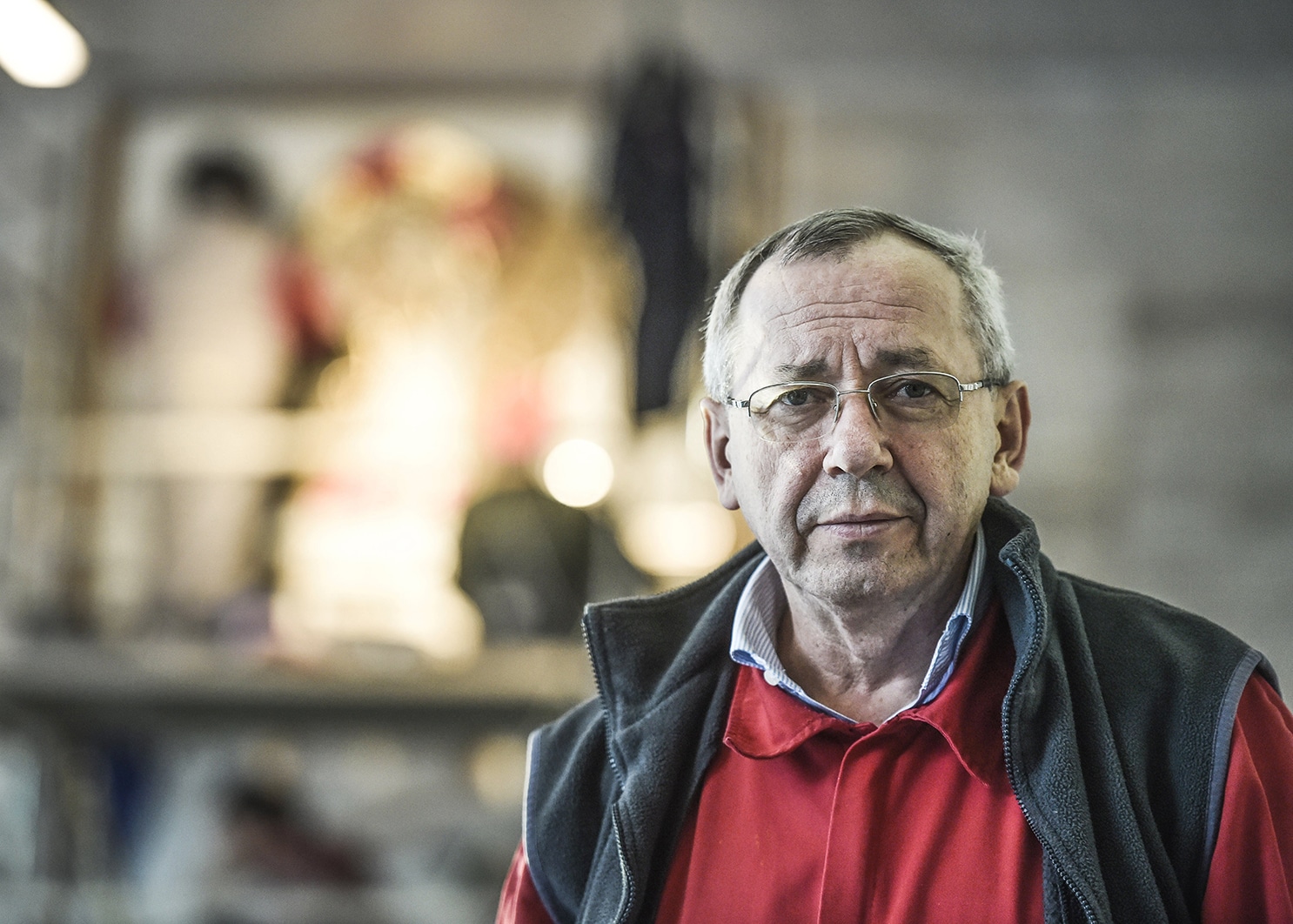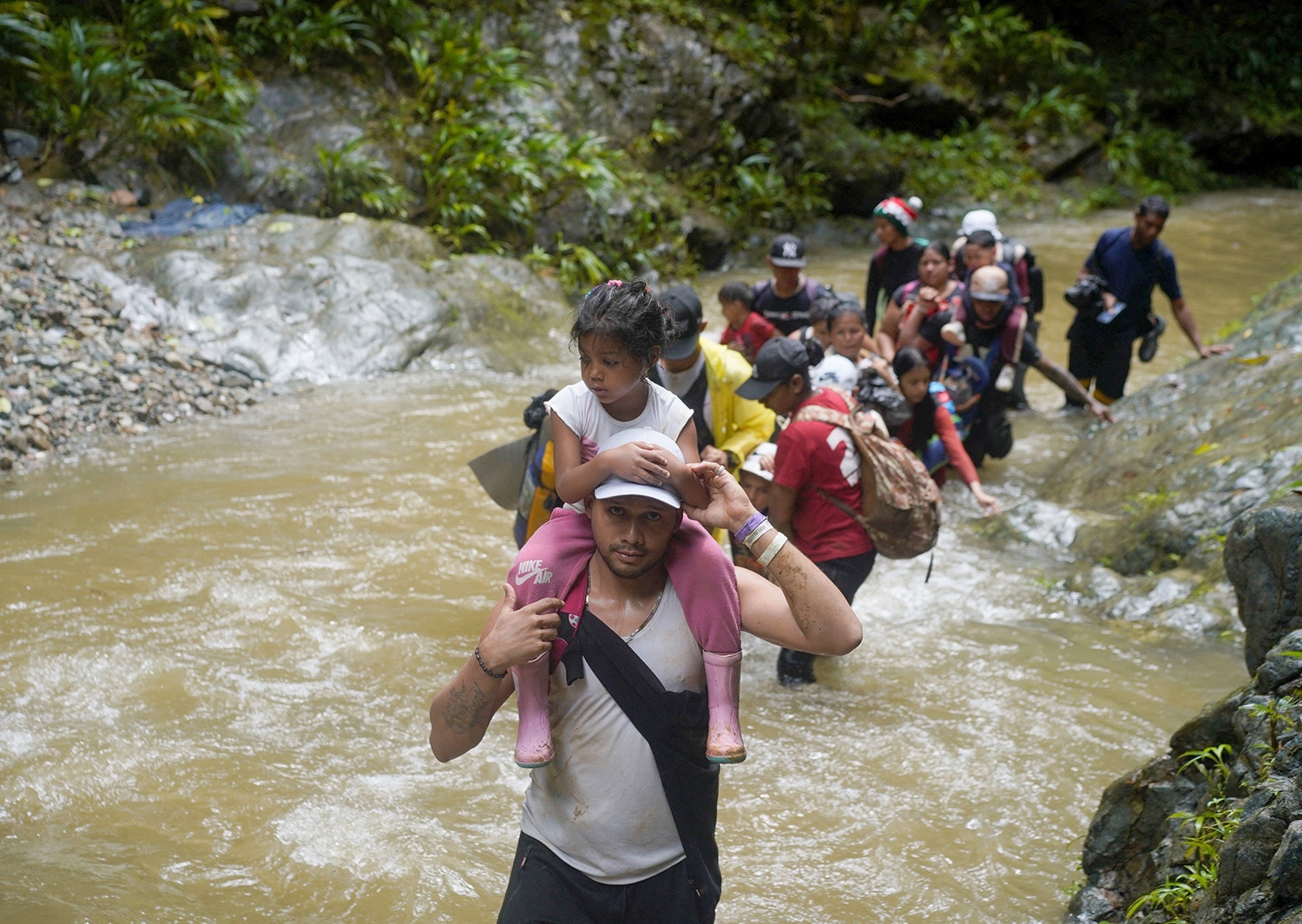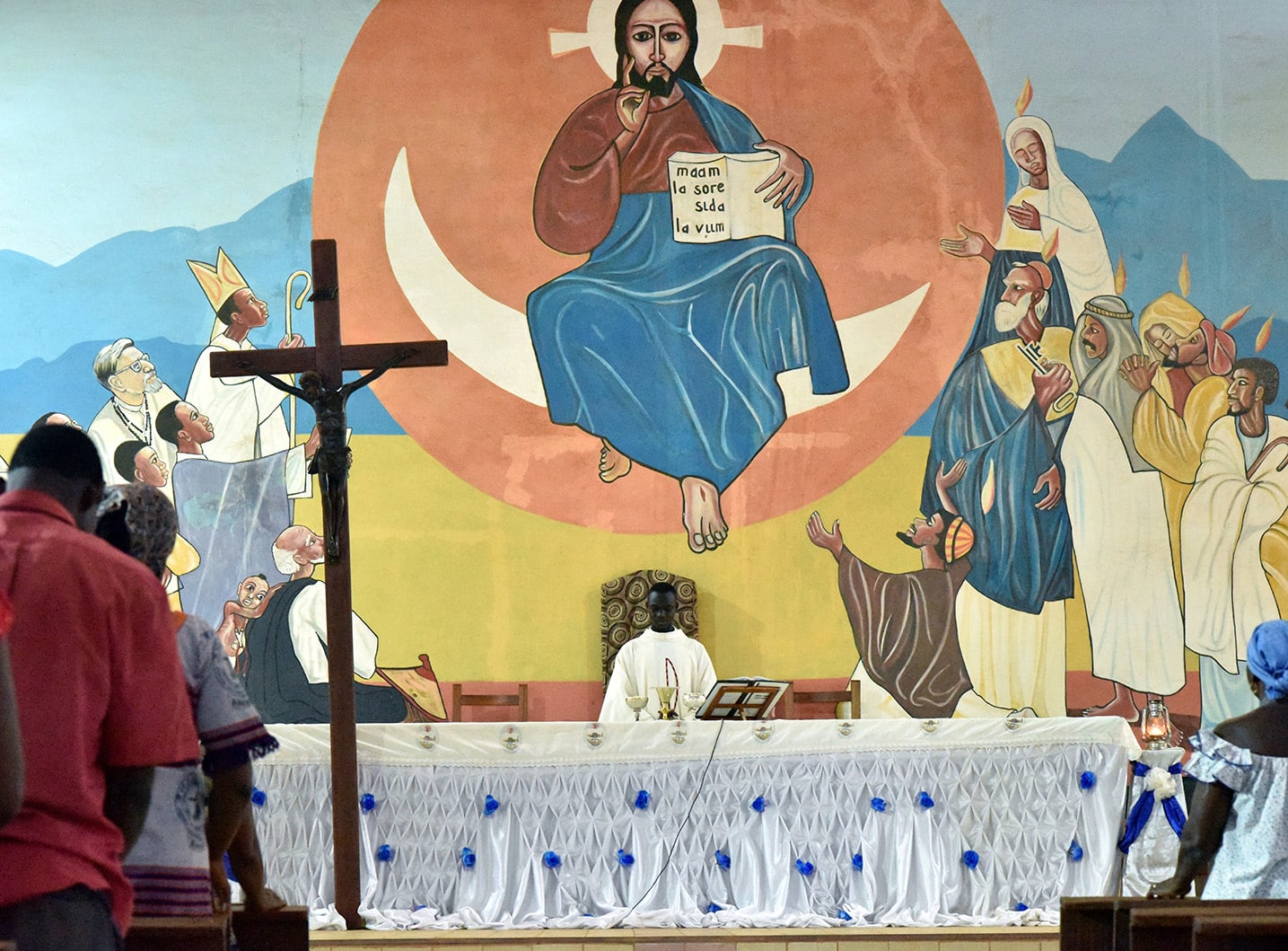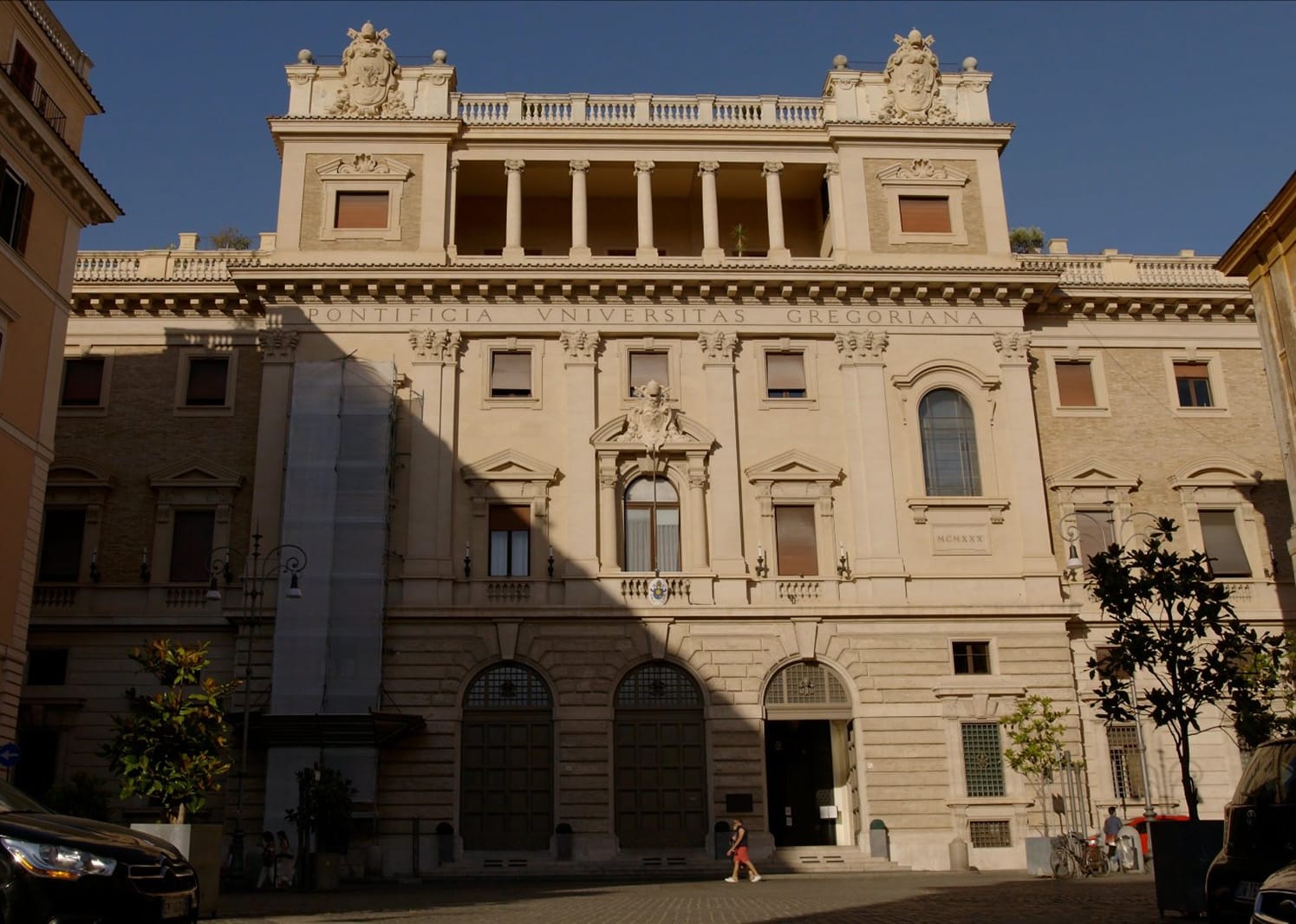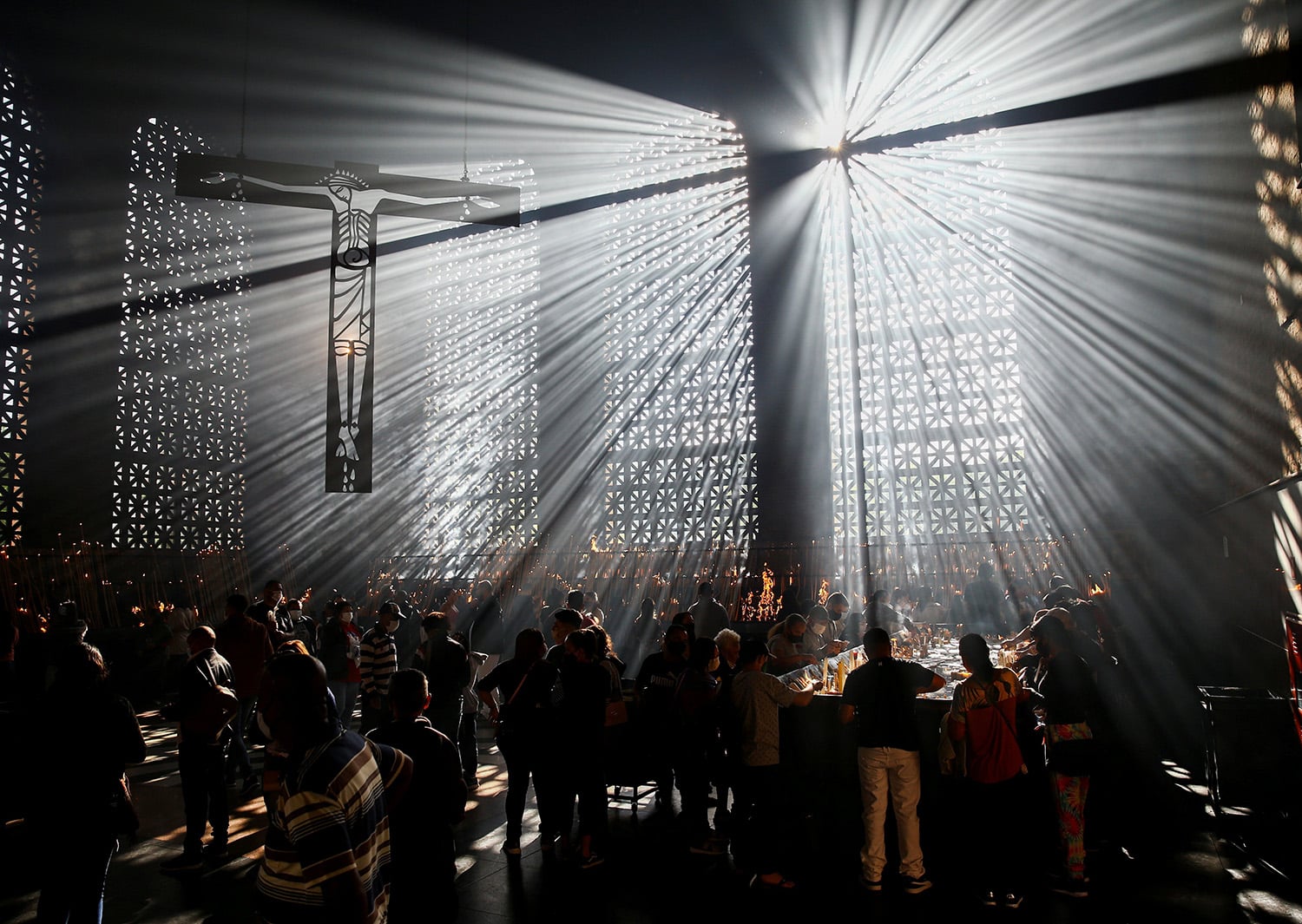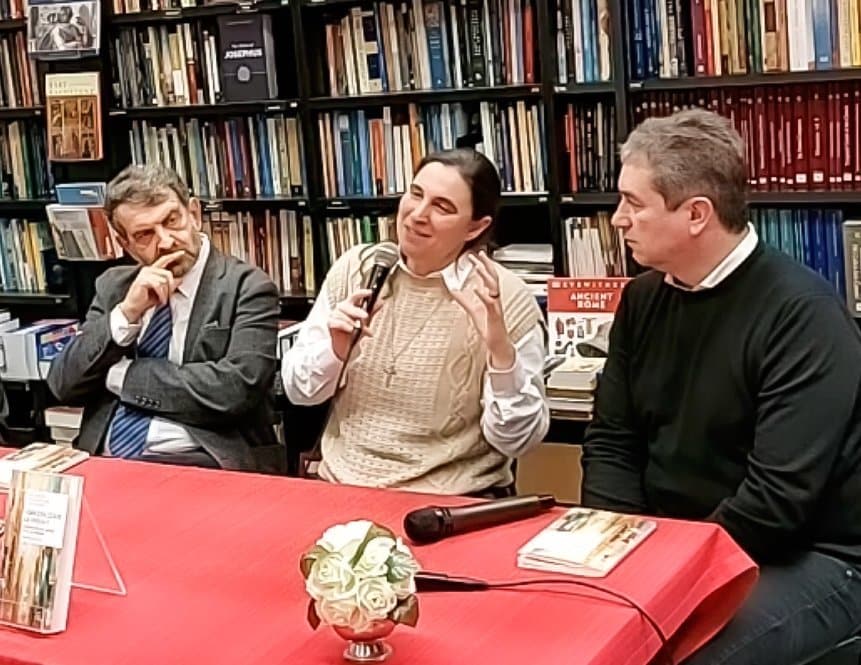(OSV News) — As evidence mounts of sexual crimes by Slovene-born Father Marko Rupnik, Church communities are resisting calls for his expensive sacral artworks to be removed from public display.
“Father Rupnik’s case is still ongoing — we must await a formal ruling by the Holy See, and see how it’s explained and justified,” said Father Tomasz Szopa, custodian of the Sanctuary of St. John Paul II the Great in Kraków, Poland, whose upper church, dedicated in 2013, is dominated by stone mosaics from Father Rupnik’s Centro Aletti center in Rome.
“But people worldwide have made donations for these artworks, and it pains them if they were destroyed — quite apart from raising questions as to what could take their place,” the Polish priest said.
He spoke as a final ruling on the ex-Jesuit was awaited from the Vatican’s Dicastery for the Doctrine of Faith.
In an OSV News interview, Father Szopa said his sanctuary’s pastoral team felt “profound solidarity” with anyone harmed by Father Rupnik and has held regular prayer meetings for local Polish victims of abuse.
He added that the meetings were moved to a lower chapel when claims against the priest-artist came to light, but said participants insisted they still felt “prayerful and safe” at the sanctuary, despite the presence of the mosaics.
Meanwhile, the display of the priest’s artworks by at least eight churches and chapels in his native Slovenia, where he holds top state honors, was defended by the secretary-general of the country’s bishops’ conference.
“Some parents have complained about their children receiving catechism classes in front of his mosaics — but I haven’t heard any other public objections,” said Salesian Sister Marija Šimenc, whose conference set up three new anti-abuse working groups March 1.
“Once his case is settled, we may hear more about the appropriateness of his artworks. But it’s likelier they’d be covered up than removed,” she told OSV News from Ljubljana.
Abuse allegations and investigations
Born at Zadlog, Father Rupnik was ordained in 1985 and became famous for his large-scale mosaics, which are displayed at over 200 Catholic centers worldwide, including the Vatican’s Redemptoris Mater Chapel and the St. John Paul II National Shrine in Washington.
In December 2022, Rome’s Jesuit headquarters disclosed it had suspended the Rome-based priest from membership after sexual abuse claims, which the victims said included rape, but Jesuit officials said the claims had been dismissed by the Vatican’s doctrinal dicastery because of the Church’s 20-year statute of limitations.
In June 2023, the order said it had expelled Rupnik for disobedience after it compiled a 150-page dossier of credible accusations against him, believed to involve between 20 and 40 women.
However, in a Sept. 18, 2023, report, the Vicariate of Rome said a canonical visitation, ordered by Cardinal Angelo De Donatis, had praised the “healthy community life” followed at the priest’s Centro Aletti for spiritual arts, where some abuses were reported, and concluded Father Rupnik was a victim of “grossly irregular procedures.”
In an Oct. 25, 2023, statement, Slovenia’s Koper Diocese confirmed it had readmitted Father Rupnik for pastoral ministry, and said he would enjoy “all the rights and duties of a diocesan priest” unless “proved guilty according to law.”
However, Vatican News reported Oct. 27, 2023, the pope had waived the statute of limitations and instructed the doctrinal dicastery to initiate new investigations, after a Pontifical Commission for the Protection of Minors had highlighted “serious problems” in handling his case.
Calls for the removal of the priest’s artworks have since come from advocacy groups, including the British-based LOUDFence, which organized an exhibition on behalf of victims March 3-6.
“People are insisting they haven’t enough funds to replace Rupnik’s mosaics, while efforts are still being made to minimize and trivialize what he did so church organizations won’t have to pay out,” LOUDFence’s lay Catholic director, Antonia Sobocki, explained to OSV News.
“But whereas money is replaceable, people aren’t — and it would be better to have a blank wall than leave his rape art in place. It offends the dignity of women and deeply contravenes Catholic teaching,” Sobocki said. “If the Vatican judgment goes against him, and he’s declared guilty of these crimes, there’ll be no question of leaving the mosaics up.”
The monumental Sanctuary of Padre Pio at San Giovanni Rotondo, dedicated in July 2004 as one of Italy’s largest churches, is one of the numerous Catholic sites with Rupnik art. A press office representative, to whom OSV News was referred when calling for comment, said there were no plans to move the “brilliant mosaics” personally installed by Father Rupnik in the crypt burial place of St. Padre Pio (1887-1968).
The representative, who only gave her first name Tatiana, added that the priest’s “human weaknesses” did not diminish his artistic achievements, and dismissed criminal claims against him as “just internet rumors.”
Meanwhile, a senior lay Catholic in Portugal, said complaints arose when a commemorative Mass for abuse victims was held in front of Father Rupnik’s giant altar mosaics at Fatima’s Holy Trinity Basilica Feb. 22 by Bishop José Ornelas, president of the Portuguese bishops’ conference.
However, he added that most pilgrims to the Marian sanctuary knew nothing about the priest or his artworks, and said shrine administrators had insisted it would be an “impossible task” to remove them.
“We all understand the value of art transcends the artist — it would be very difficult to change what’s undoubtedly the most important art in this new church,” Octávio Carmo, chief editor of the Portuguese church’s Ecclesia information agency, told OSV News.
“People are focusing on bigger issues involving the church’s stance against abuse, with two major reports now being analyzed and measures implemented to help victims. These are the questions worrying people in Portugal — not the question of Rupnik,” he said.
Can we separate art from the artist?
The Holy See’s Press Office confirmed Feb. 21 that the doctrinal dicastery investigators had requested “all available information” on Father Rupnik, to identify “which procedures can and should be implemented.”
The Pontifical Commission for the Protection of Minors, which is to report soon on current safeguarding policies and procedures, also has requested testimonies from female victims from the priest’s Loyola Community in Slovenia, which the Vatican ordered dissolved in October.
However, Vatican procedures were criticized by two former Loyola community members at a Feb. 21 Rome press conference, including Slovenian-born Mirjam Kovac, a canon law professor at the Pontifical Gregorian University, where Father Rupnik received his doctorate in missiology. Kovac said the number of Loyola women victims totaled “at least 41.”
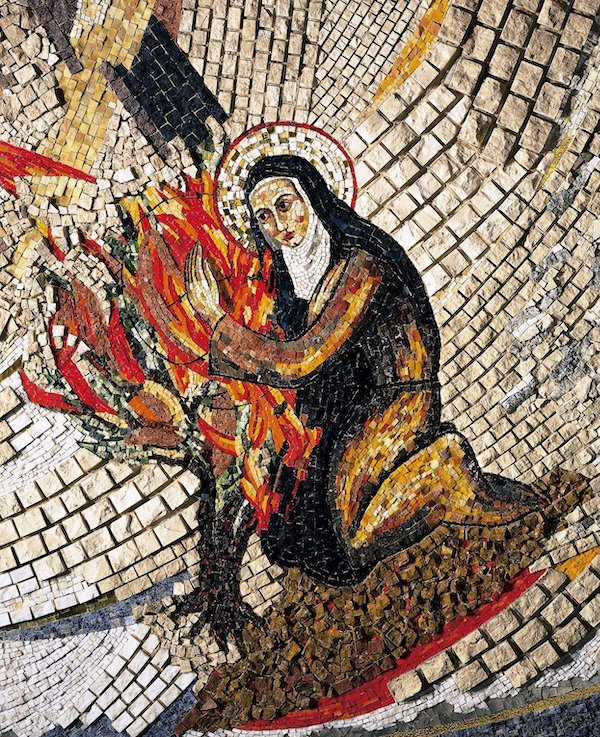
In her OSV News interview, Antonia Sobocki said she believed pressure was growing to have Rupnik’s mosaics removed from Catholic sites from “people with the power to make changes,” as well as from other victims of clergy crimes and prominent former victims of Father Rupnik such as the award-winning French mosaic artist, Sister Samuelle Cheron.
“The Vatican is beginning to investigate the effects of clerical abuse on ordinary people who’ve looked to the church for support and safety, only to have their faith undermined and damaged by discovering it happens here as well,” Sobocki said.
“This kind of abuse affects a huge tranche of the church — perhaps one in three women, and one in six men — and explains today’s empty pews.”
“I don’t think we can separate the art from the artist, particularly when, by Rupnik’s own admission, it expresses what he did to these people. Keeping the art in place isn’t just a failure — it’s an active glorification of abuse,” she told OSV News.
Still of artistic value?
In Krakow, Father Szopa said pastors at the St. John Paul II sanctuary placed high priority on caring for those suffering harm, but added that disciples of the Polish pope would feel let down if their past donations for the sanctuary’s artworks were disregarded.
“We are all sinners, to a greater or lesser degree, whether privately or publicly — and we must recognize that even bad people can produce work of great artistic and spiritual value,” said the sanctuary’s custodian, who also sits on the board of Rome’s John Paul II Foundation.
“We must also remember these mosaics aren’t just the achievement of a single artist, but of a whole team of people from the Centro Aletti, who contributed to them, are innocent of any wrongdoing and don’t deserve to have their work destroyed,” he added.
In Spain, where Rupnik’s mosaics decorate Madrid’s Almudena Cathedral and the bishops’ conference chapel, the capital’s Francisco de Vitoria University awarded the priest an honorary doctorate in 2013, but canceled an artwork order for its new campus chapel in January after two years’ work.
In neighboring France, a commission established in 2023 by Bishop Jean-Marc Micas of Tarbes and Lourdes is to decide this spring whether Father Rupnik’s mosaics at the Rosary Chapel in Lourdes, installed in 2008, should be removed.
“Should the mosaics be kept or removed? This complex issue has been occupying Msgr. Micas for over a year, and he set up a commission in March 2023 to discern what should be done,”
David Torchala, director of communications at the Sanctuary of Lourdes, told OSV News March 8.
He admitted, however, that as the scandal unfolded the sanctuary “have been receiving all kinds of pressure, particularly in the form of letters going in opposite directions.”
“We received letters and requests telling us that we should keep these mosaics because they were created by a great contemporary sacred artist.”
Mosaics at Lourdes
Torchala said, “The mosaics, it must be said, are magnificent. They occupy a gigantic area on the façade of one of Lourdes’ three basilicas. As I speak, there are people who have not followed the whole affair, and the controversy that goes with it, and who are standing in front of the basilica, having their picture taken because the mosaics are so beautiful. The general public is not aware of everything.”
The mosaics in the Lourdes sanctuary were installed for the 150th anniversary of Lourdes apparitions in 2008.
“At the same time, over the past year we have been receiving a lot of letters and requests from people who have been victims of Marko Rupnik, or people who are speaking on their behalf, asking us to destroy these mosaics,” Torchala said.
“At first, we might have thought that we had to distinguish between the man and the work, but now, after digging deeper, we realize that we cannot leave it at that,” he said.
While awaiting the decision of the commission, he said he is aware “that other sanctuaries have their eyes fixed on Lourdes. … The decision concerns Lourdes, but the awareness that Lourdes has an influence beyond the sanctuary is strong.”
However, he said, “It is a complex decision,” emphasizing that the bishop is not going to take it on alone.
“What is certain is that Lourdes is a place of consolation, a place where people come to lay down their burdens, to ask for healing. Today, how can we remain insensitive to the testimony of people who don’t understand how we can maintain works that evoke the presence of a predator?” he continued. “When we look at the Basilica of the Rosary, which has two large arms at its sides, as if to welcome those who come, how can we imagine leaving in the center of these arms the works of someone who has done so much harm. Is it still possible to distinguish man from artist in this respect? It is a real subject.”
The Slovene priest, now 69, is still listed as a consultant and Jesuit by the Vatican’s Dicastery for Divine Worship and Discipline of the Sacraments.
The Holy See’s Press Office declined to answer a March 14 OSV News inquiry about the future of Father Rupnik’s artworks at the Apostolic Palace’s Redemptoris Mater Chapel.

